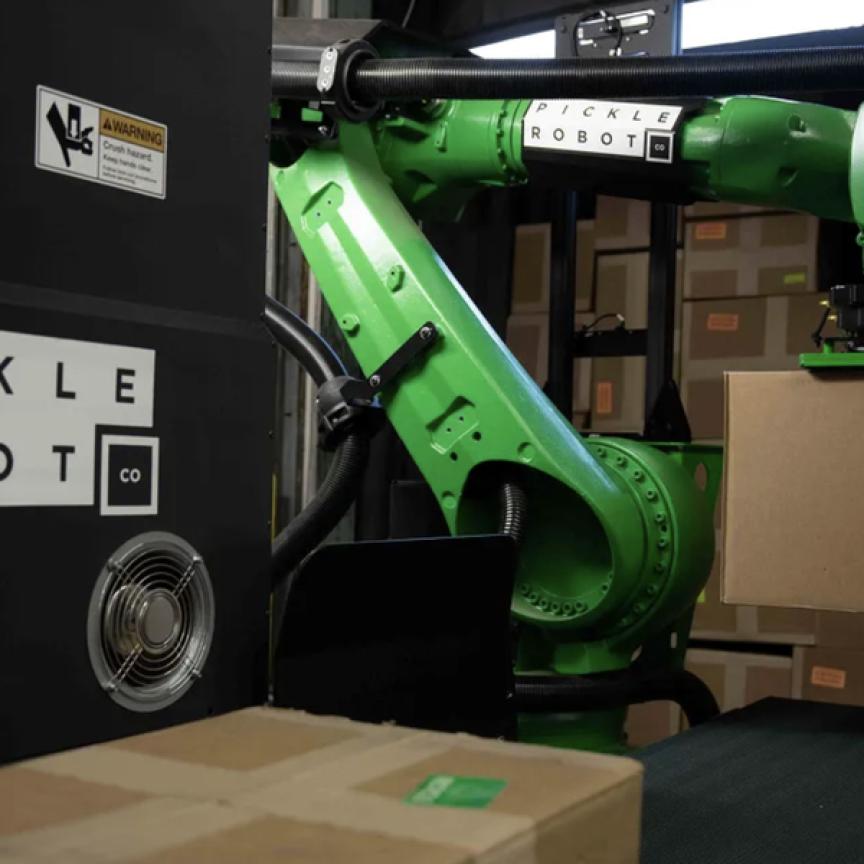Artificial intelligence (AI) and machine learning have been a part of industrial production for years—at least in theory. The vehemence of how AI is now making its way into practice will become apparent at automatica, which will be held in Munich from June 21 to 24, 2022.
It is beyond question that AI-based automation solutions will be the most important topic in coming years. Now the question is how quickly the immense potential of this technology can be used to the benefit of manufacturing companies. A survey by Longitude Research and Siemens provides some clear insight: According to the survey, more than half of business leaders expect that control of industrial plants, machinery, and critical infrastructure will be taken over by AI within the next five years.
However, the basic prerequisite for this is end-to-end digital connectivity of all components involved in the production process. Once this hurdle is overcome and autonomous exchange of data between all systems involved is ensured, the basis for smart production will have been created. “In a few years’ time, large-scale digital networks will be implemented. This will enable all components to exchange data with one another, optimize themselves, and act intelligently” says Patrick Schwarzkopf, Managing Director, VDMA Robotics + Automation Association.
Intelligent actions require vision
Even though most facilities have not yet implemented comprehensive digital networking, nothing stands in the way of applying stand-alone AI solutions today. Here, machine vision is paving the way for smart production processes.
A quick trip into space shows how advanced imaging technology works. For example, ten satellites equipped with ABB multispectral imaging systems will orbit the earth and record the ecosystem of our planet starting in 2023. The system provides high-quality imagery with a resolution down to five meters. An AI-based analytics system provided by the satellite operator will assess changes across our globe—both natural and human-caused—in near real-time.
Now back to earth and into the automatica exhibition halls. Here, exhibitors such as Asentics, Basler, Cognex, MVTec, IDS, ISRA Vision, Sick, and Stemmer Imaging will present groundbreaking cameras, sensors, and software with integrated AI. Imaging is a critical aspect of AI-based robotics applications, too. Vision systems have been the prerequisite for robot autonomy and flexibility for many years. If robots are to act intelligently, high-performance image processing will be one of the basic requirements.
Computing power as basis for AI
Dr. Werner Kraus, Department Head Robotics and Assistance Systems at Fraunhofer IPA, sums up other robot characteristics required for the integration into smart production environments:
“Image or force data forms the basis for AI-based robotic functions. However, most robots currently deployed are blind in their supplied state. In the future, the integration of cameras and force sensors must be already included in the scope of services for any standard robot to be deployed in smart factories. To enable truly autonomous actions, the virtual training environment is another crucial factor. Industrial robots need a digital twin to generate training data in simulations so that the actual robot can be productive right from the start.”
Last but not least, cycle time is always critical in robotics, meaning that low-latency real-time AI is required. Therefore, AI is moving from the cloud with extensive computing resources to the edge. This requires computing power in the robot controller to run and train AI models.
High-performance brains for robots
Young emerging companies such as Micropsi Industries and Robominds are developing visionary solutions to qualify standard robots for AI applications while keeping the effort to a minimum. These companies have made it their mission to make robots smart. Christian Fenk, CSO of Robominds, comments: “We believe that every robot deserves a brain. At automatica, we will show how robots can be upgraded for AI applications using high-performance controllers and machine vision systems, thus ‘tuning’ them to be particularly easy to operate. We are pursuing the ambitious goal of ushering in a new age of robotics by pioneering true artificial intelligence.”
Focus on gripping: integrated intelligence
The extent to which smart systems are already being deployed in standard components is, among others, demonstrated by manufacturers of gripping systems, including exhibitors such as Festo, IPR, Onrobot, Schunk, and Zimmer Group. Such high-tech grippers—packed with all kinds of sensors and integrated software—enable reliable implementation of applications such as bin picking with comparatively little effort. Visiting professionals at automatica can also take a closer look at exciting combinations of cobots and smart gripping systems in various demo applications.
Visionary intralogistics and production concepts
In summary, the megatrends of digital networking and artificial intelligence are ushering in a new era of automation. They enable implementations of highly flexible intralogistics and production concepts that were previously not feasible. With the current pace of innovation, this year's leading exhibition is probably going to be the most important automatica ever—with a wider spectrum of exhibitors than ever before, ranging from startups to industry leaders.

